


Numerous web sites, Soul Walking - Marvin Gaye, History Of Rock - Marvin Gaye, Rolling Stone - Marvin Gaye Discography & Rock & Roll Hall Of Fame - Marvin Gaye were quite helpful in preparing my tribute to Marvin Gaye. Please click on the hyperlinks to enjoy these web sites.
With a career that spanned the entire history of rhythm and blues, from '50s doo wop to '80s soul, Marvin Gaye exemplified the maturation of romantic black pop into a sophisticated form spanning social and sexual politics, Marvin Gaye was one of the most consistent and enigmatic of the Motown hit makers. He was inducted into the Rock & Roll Hall Of Fame - Marvin Gaye, as a performer, in 1987.
Biographer David Ritz said of Gaye, “His music was cathartic. His songs were prayers, meditations, strategies for survival.”
He was born Marvin Pentz Gay Jr., April 2nd 1939, Washington, D.C., U.S.A. and died April 1st, 1984, Los Angeles, U.S.A. (A horrible April Fools’ Day announcement, which I wish was an ill-timed joke.)
Marvin Gaye's contribution to Black Music over the past four decades is immeasurable. Marvin Gaye made a huge contribution to soul music in general and the Motown sound in particular. As one of Motown’s renaissance men, Gaye could do it all. He wrote, produced and played a variety of instruments. Most of all, Gaye possessed a classic R&B voice that was edged with grit yet tempered with sweetness. A musical visionary, he conceived of albums as something more than individual songs, whether it be his early collections of show tunes and standards or later thematic masterworks about the state of the world (What’s Going On?), sexual politics (Let’s Get It On) and marriage (Here, My Dear).
Marvin Gaye was named after his father, a minister and preacher in the
Gaye sought to escape from his father’s stern hand and the harsh realities of ghetto life through music. His musical tastes were shaped by such R&B artists as Rudy West (of the Five Keys), Clyde McPhatter (of the Drifters), Ray Charles and Little Willie John. He cited “God Only Knows,” by the Capris, as critical to his musical awakening.
Gaye returned to his hometown of
The following year the group was taken under the wing of producer and singer Harvey Fuqua, who utilized them to reform his doo-wop outfit the Moonglows his backing group. However, in 1960, the group soon broke up and Fuqua moved to
Marvin added an 'e' to his surname (the word 'gay' was taking on newer meanings and Gaye was concerned about his reputation considering the flamboyant dress sense of his father) and began his career as a jazz singer. In 1961, he married Gordy's sister, Anna, and was offered a solo recording contract.
Though he initially envisioned himself a supper-club singer and dreamed of becoming “the black Frank Sinatra,” Gaye succeeded at Motown as a soul man who aimed his talent at a younger audience.
On December 8, 1961: The Soulful Moods of Marvin Gaye, an album of jazz-pop standards and Gaye’s debut, is released. In 1962 he was persuaded to record R & B, and notched up his first hit single with the confident 'Stubborn Kind Of Fellow', a top 10 R & B hit. This record set the style for the next three years, as Gaye enjoyed hits with a series of energetic, dance songs that cast him as a smooth soul figure. Over the next ten years working with nearly every producer at Motown, including Holland-Dozier-Holland, Smokey Robinson, and Norman Whitfield, Gaye had over twenty hits. Specializing in mid-tempo ballads, he also had dance hits: "Hitch Hike," (#30, 1963), "Can I Get a Witness" (#22, 1963), and "Baby Don't Do It" (#27, 1964).
Gaye favored romantic and sometimes sensual ballads and felt that his desire to move into a more mainstream, sophisticated style was hampered by Motown's demand for hits. For a singer as unenthusiastic as Gaye later claimed to be, he gave almost every song an inspired reading. His Top Ten Hits include "Pride and Joy," (#10, 1963), "I'll Be Doggone" (#8, 1965), "Ain't That Peculiar" (#8, 1965), and "How Sweet It Is to Be Loved By You" (#6, 1965). Among his other thirty nine Top Forty singles of this period were "Try It Baby" (#15, 1964) with background vocals by the Temptations, "You're A Wonderful One" (#15, 1964, with backing vocals by the Supremes).
He also continued to work behind the scenes at Motown, co-writing Martha And The Vandellas' hit 'Dancing In The Street', and playing drums on several early recordings by Little Stevie Wonder.
On April 15, 1964, “Together”, an album of duets by Marvin Gaye and Mary Wells, is released. It is Gaye’s fifth album and first to make Billboard’s Top 200 album chart.
His status as Motown's best-selling male vocalist left him free to pursue different avenues on his albums, which in 1965 included a tribute to the late Nat 'King' Cole and a collection of Broadway standards.
To capitalize on his image as a ladies' man, Motown teamed Gaye with their leading female vocalist, Mary Wells, for some romantic duets.
When Wells left Motown in 1964, Gaye recorded with Kim Weston until 1967, when she was succeeded by Tammi Terrell. On July 15, 1967: “Ain’t No Mountain High Enough,” the first of many duets by Marvin Gaye and Tammi Terrell, peaks at #19. The Gaye / Terrell partnership represented the peak of the soul duet, as their voices blended sensuously on a string of hits written specifically for the duo by Ashford And Simpson. Terrell developed a brain tumor in 1968, and collapsed onstage in Gaye's arms.
Records continued to be issued under the duo's name, although Simpson allegedly took Terrell's place on some recordings.
Through the mid-60's, Gaye allowed his duet recordings to take precedence over his solo work, but in 1968 he issued 'I Heard It Through The Grapevine' (written by Whitfield / Strong), a song originally released on Motown by Gladys Knight And The Pips, although Gaye's version had actually been recorded first. It became the label's biggest-selling record to date. On December 14, 1968, Gaye’s version tops the R&B and pop charts for the first of seven weeks. It comes almost exactly a year after Gladys Knight and the Pips’ version of the song topped the R&B charts for six weeks.
Gaye followed up with another # 1, R & B hit, 'Too Busy Thinking 'Bout My Baby', but his career was derailed by the illness and eventual death of Terrell, who had been Gaye’s favorite duettist, who passed away three years after being diagnosed with a brain tumor, in March 1970. Devastated by the loss of his close friend and partner, Gaye spent most of 1970 in seclusion. Gaye remarked, “I felt that I had somehow died with her.” Gaye, who considered himself more of a recording than a performing artist in any case, didn’t take to the stage again for five years after her death.
Subsequently, he reinvented and asserted himself to the point where he and Stevie Wonder became Motown’s first truly autonomous artists. Gaye’s artistry reached its peak with 1971’s What’s Going On, an ambitious, nearly operatic concept album that mused deeply on such issues as
'What's Going On' was a set of recordings that Motown at first refused to release, but which eventually formed his most successful solo album. On 'What's Going On', a number 1 hit in 1971, and its two chart-topping follow-ups, 'Mercy Mercy Me (The Ecology)' and 'Inner City Blues', Gaye combined his spiritual beliefs with his increasing concern about poverty, discrimination and political corruption in American society. Gaye evolved a new musical style that influenced a generation of black performers. Built on a heavily percussive base, Gaye's arrangements mingled varying influences into his soul roots, creating an instrumental backdrop for his sensual, almost pleading vocals. These three singles were all contained on 'What's Going On', a masterpiece on which every track contributed to the overall message. Stevie Wonder and Smokey Robinson say that this is their favorite 'all time' LP. It is the first Motown album to include printed lyrics and to credit Motown’s house musicians by name. In 1994,
On May 1, 1972,
Gaye composed the soundtrack to the 'blaxploitation' thriller 'Trouble Man'. His primarily instrumental score highlighted his interest in jazz, while the title song gave him with another hit single.
Gaye's next project saw him shifting his attention from the political to the sexual with 'Let's Get It On'. Its explicit sexuality marked a major change in Gaye's career. On September 8, 1973, “Let’s Get It On,” by Marvin Gaye, tops the singles charts for the first of two weeks.
Meanwhile, he continued to let Motown market him in a traditional fashion by agreeing to collaborate with Diana Ross on a sensuous album of duets in 1973, although the two singers allegedly did not actually meet during the recording of the project. On August 17, 1974, Marvin Gaye Live!, which documents the singer’s first concert in five years, reaches #8 on the album chart as his album of duets with Diana Ross descends after a nearly yearlong run.
The break-up of his marriage to Anna Gordy in 1975 delayed work on his next album. On August 26-27, 1976, Marvin Gaye performs sold-out shows on consecutive nights in
In 1978 he fled the
In 1980, under increasing pressure from the Internal Revenue Service, Gaye moved to
Persistent reports of his erratic personal conduct and reliance on cocaine fuelled pessimism about his future career, but instead he re-emerged in 1982 with a new single, 'Sexual Healing', which combined his passionate soul vocals with a contemporary slow-dance backing. The subsequent album, 'Midnight Love', in October 1982, offered no equal surprises, but the success of the single seemed to herald a new era in Gaye's music. On November 6, 1982: “Sexual Healing” tops the R&B chart for the first of ten weeks. Early in 1983 it will peak at #3 on the pop chart. On February 23, 1983, “Sexual Healing,” wins Grammy Awards for Best Male Vocal Performance and Best Instrumental Performance. They are the first Grammys of Gaye’s career. He sang live at the Grammy broadcast and in 1983, in concert at the
Gaye returned to the
On January 21, 1987, Marvin Gaye is inducted into the Rock and Roll Hall of Fame at the second annual induction dinner. Nick Ashford and Valerie Simpson are his presenters.
On April 25, 1995: The Master 1961-1984, a four-disc overview of Marvin Gaye’s career, is released on Motown Records.
On February 28, 1996: Marvin Gaye posthumously receives the Lifetime Achievement Award from the National Academy of Recording Arts and Sciences at the 38th annual Grammy Awards.
Motown and
On February 27, 2001, on the thirtieth anniversary of its original release, Marvin Gaye’s classic “What’s Going On,” is issued in a two-disc deluxe edition that includes alternate mixes and a historic 1972 performance.
Marvin Gaye's entire recorded output signifies the development of black music from raw rhythm and blues, through sophisticated soul to the political awareness of the early 70's, and the increased concentration on personal and sexual politics thereafter. Gaye's remarkable vocal range remains a testament for all subsequent soul vocalists, and his 'lover man' stance has been frequently mimicked.
Then, as you thought that that was the final word, Motown records embarked on a series of 'Deluxe' releases of Marvin's earlier material. One track, 'Where Are We Going?', created a great deal of interest. Written in part by the Mizell Brothers (Donald Byrd, Taste Of Honey, Bobbi Humphrey, Rance Allen etc.), the tune was heralded as the greatest release, of his, since Marvin's passing some 17 years earlier.
Marvin Gaye’s Discography…
There are so many Marvin Gaye CD’s, and Greatest Hits Compilations, that instead of listing each one, or, possibly listing many, and forgetting some, I will include a hyperlink, Rolling Stone - Marvin Gaye Discography. Click on the hyperlink to see the MANY Marvin Gaye recordings…
Marvin Gaye was an underrated legend. He has so many good songs. Among my favorites are Ain’t No Mountain High Enough, Ain’t Nothin’ Like The Real Thing, How Sweet It Is (To Be Loved By You), I Heard It Through The Grapevine, Let’s Get It On, Me And Mrs. Jones, Sexual Healing and What’s Going On ?
Thanks, Marvin, for some smooth, sweet sounding music…Rest in peace…

















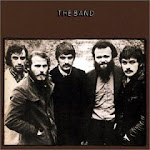



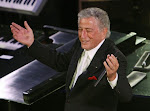







































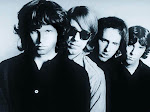































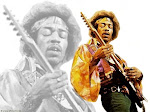









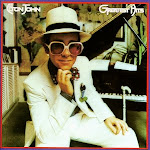




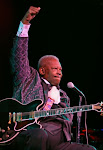


















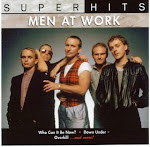%2B-%2BRock.jpg)

















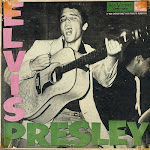



















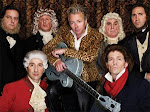




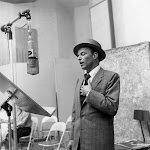
































No comments:
Post a Comment